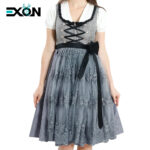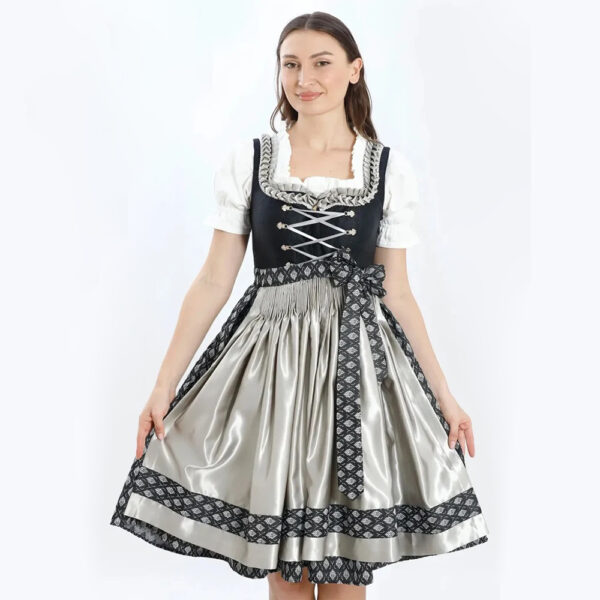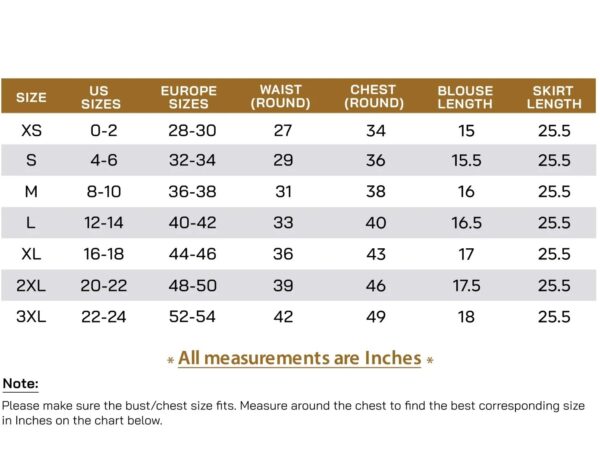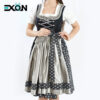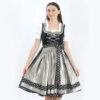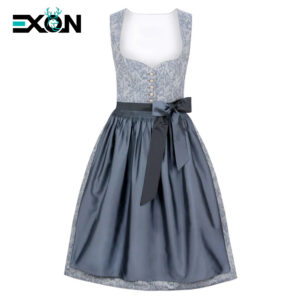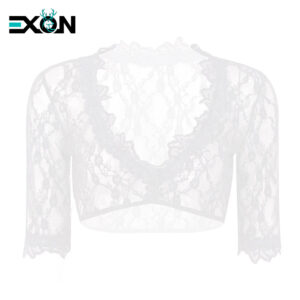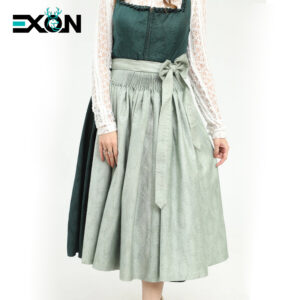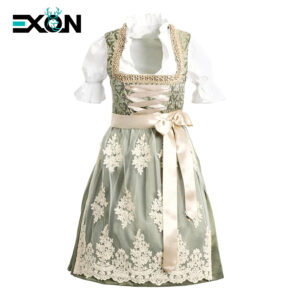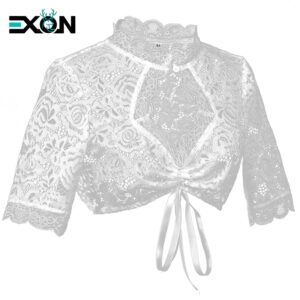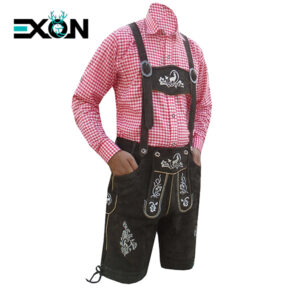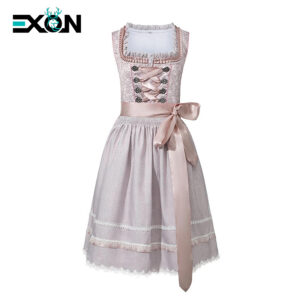Description
The German Dirndl: A Symbol of Heritage, Craft, and Celebration
The German dirndl is a traditional dress that embodies the cultural soul of Bavaria and broader German heritage. More than just festive attire, it represents a deep connection to history, regional identity, and artisanal craftsmanship. Worn with pride at celebrations like Oktoberfest, weddings, and folk festivals, the dirndl seamlessly blends rustic charm with refined elegance.
🏔️ Historical Roots: From Rural Garb to Cultural Icon
Originally, the dirndl (from the word Dirndlgewand, meaning “young woman’s dress”) was the practical everyday clothing of Alpine peasant women and servants in the 18th and 19th centuries. Its design prioritized durability and freedom of movement for labor in farms and households.
During the late 19th and early 20th centuries, the dirndl underwent a transformation. Influenced by Romanticism and royal patronage—such as that of Empress Elisabeth of Austria (“Sisi”)—it evolved from simple workwear into a symbol of regional pride and rustic elegance. Urban elites began wearing refined versions made from luxurious fabrics, elevating it to high fashion.
Today, the dirndl is both a cherished tradition and a modern fashion statement, reflecting a living culture that honors the past while embracing the present.
👗 Anatomy of a Dirndl: More Than Just a Dress
A traditional dirndl consists of several meticulously crafted components:
-
Bodice (Mieder or Leibl):
Fitted and often structured with boning, the bodice accentuates the wearer’s silhouette. It typically laces up, buttons, or hooks at the front or back and is detailed with embroidery, ribbons, or decorative trim. -
Blouse (Dirndlbluse):
Worn underneath the bodice, the blouse is usually white and made from cotton, linen, or lace. It may feature puff sleeves, a Peter Pan collar, or a delicate off-the-shoulder neckline (Schalkragen). -
Skirt (Rock):
Attached to the bodice, the skirt is full, pleated, and falls anywhere from knee-to-ankle length. Its cut allows ease of movement—perfect for dancing. -
Apron (Schürze):
Tied around the waist, the apron is both decorative and symbolic. Its placement often hints at the wearer’s relationship status:-
Left side: Single
-
Right side: In a relationship or married
-
Middle front: Virgin (traditional) or a server/child
-
Back: Widow
-

